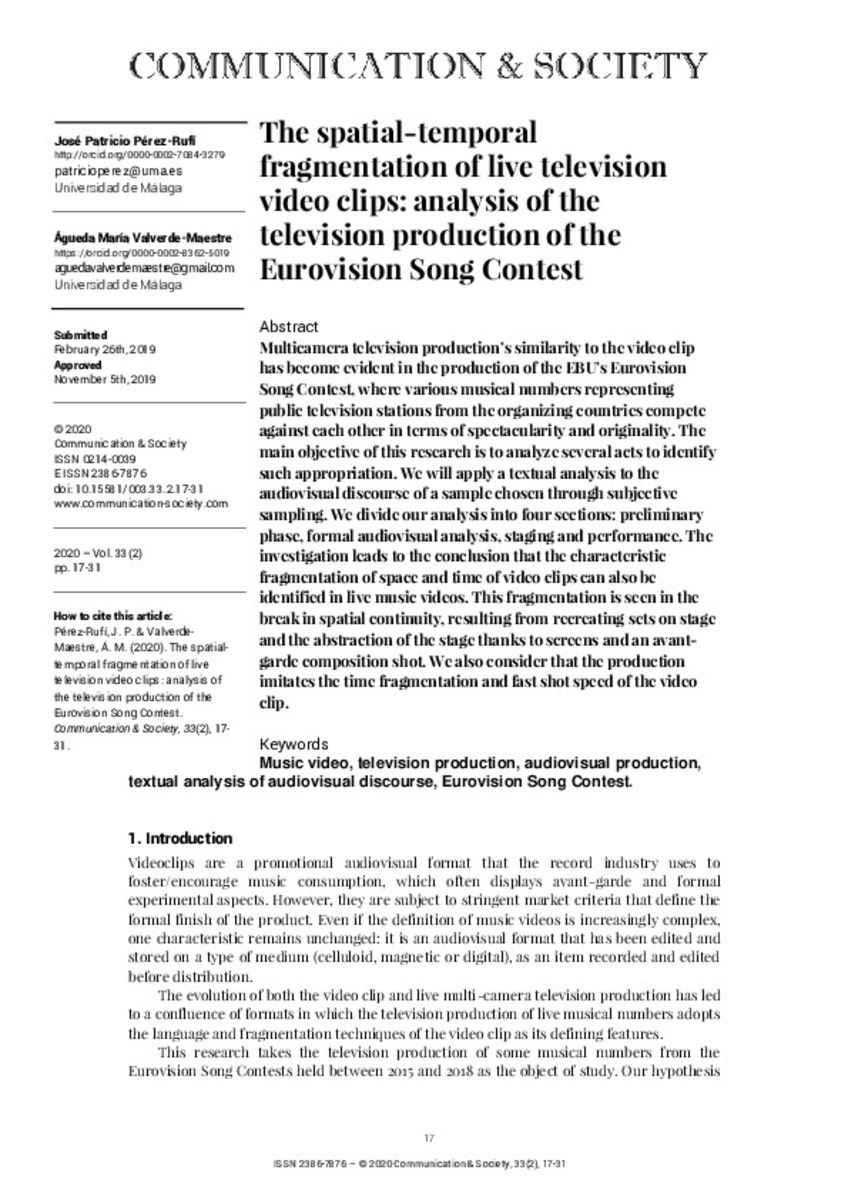The spatial-temporal fragmentation of live television video clips: analysis of the television production of the Eurovision Song Contest
Other Titles:
The spatial-temporal fragmentation of live television video clips: analysis of the television production of the Eurovision Song Contest
Keywords:
Music video
television production
audiovisual production
textual analysis of audiovisual discourse
Eurovision Song Contest
Publisher:
Servicio de Publicaciones de la Universidad de Navarra
Citation:
Pérez-Rufí, J.P. (José Patricio); Valverde-Maestre, A.M. (Águeda María). "The spatial-temporal fragmentation of live television video clips: analysis of the television production of the Eurovision Song Contest". Communication & Society. 33 (2), 2020, 17 - 31
Statistics and impact
0 citas en

0 citas en

Items in Dadun are protected by copyright, with all rights reserved, unless otherwise indicated.








